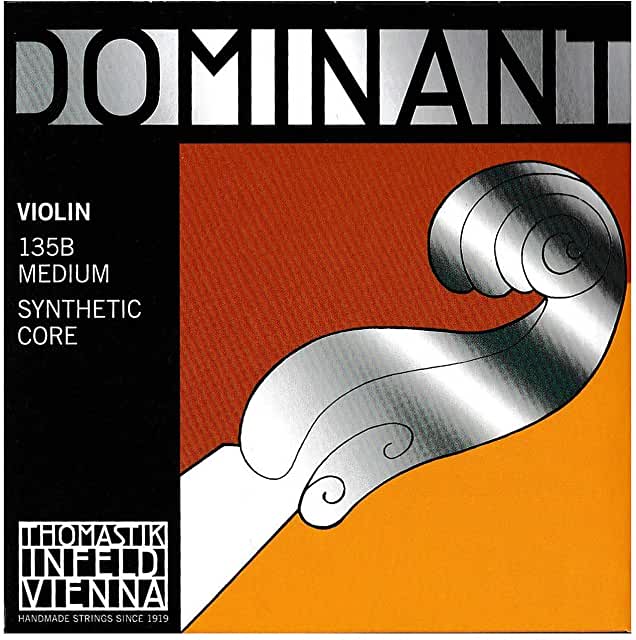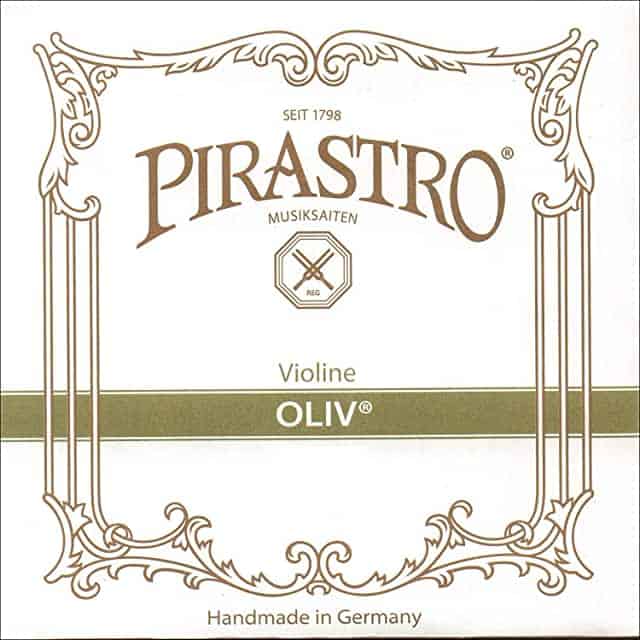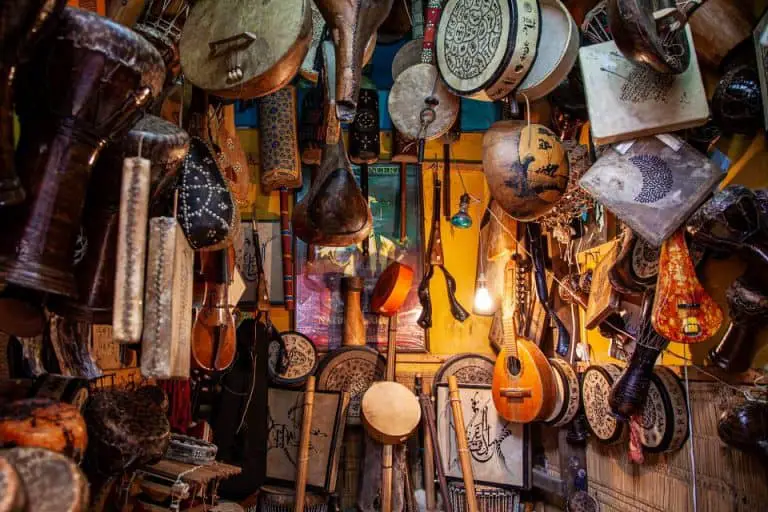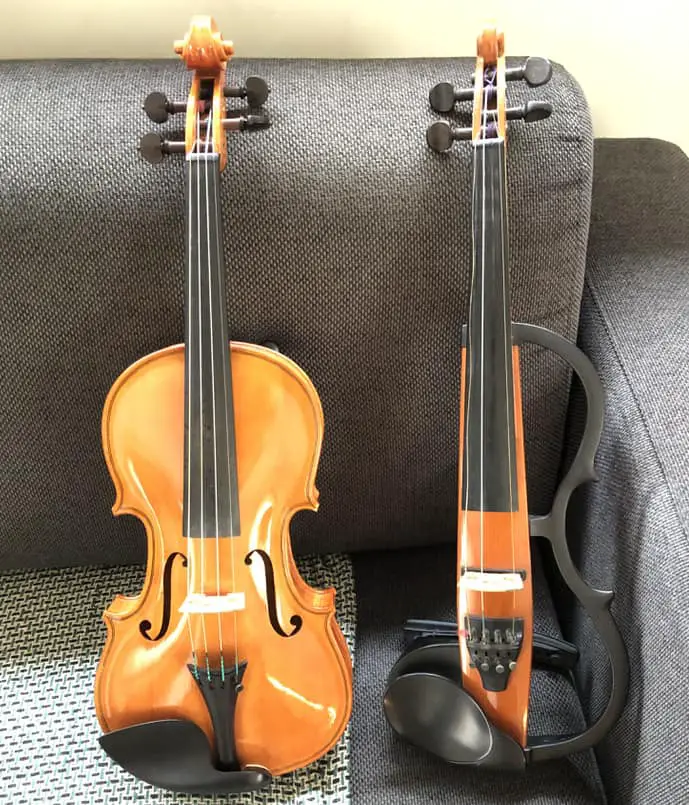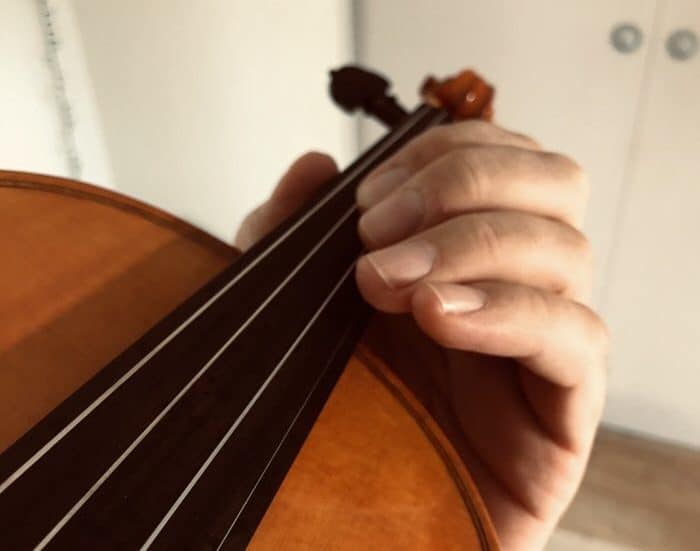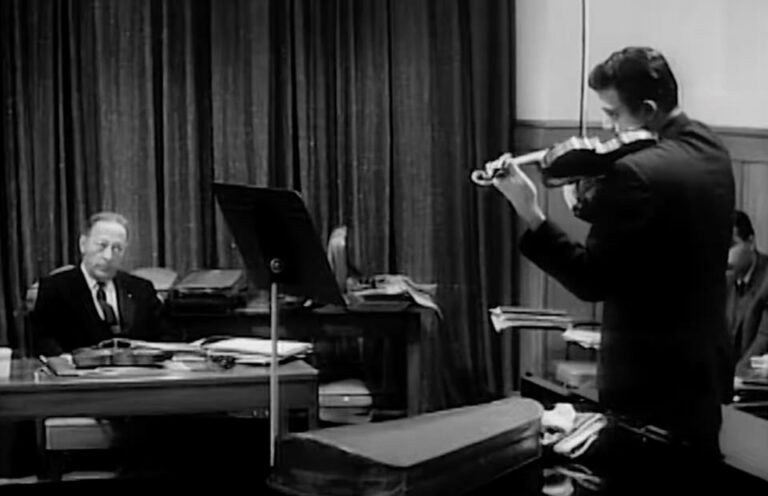How to Choose Strings for a Violin or any String Instrument? What to Look for
As Hilary Hahn puts it: ” Strings, you have to think they are part of you, you don’t have to think about them. It’s a good thing not to notice your strings. But for me, it is making a huge difference. When I am putting my bow to that string, I know how it is going to speak. I know what I have to do to hit that particular note that I am trying to hit at a certain time, with a certain tone, with a certain attack in the middle of a performance when I am trying everything else new musically at the moment”.
So strings need to be reliable, a reference point; they shouldn’t give any unwanted response or surprise whatsoever. They should be symbiotic and somehow transparent to the music. They shouldn’t stand in the way of the music.
Hilary started simply by using dominant as a student. When she wanted more power, she started using silver-plated D and G later on.
Strings need to be reliable and dependable. They should always respond in a way we musicians expect them to do.
When to change strings
It is the subject of a whole article that I have written in this blog. But when to change strings and what types of strings to choose are somehow related. If you decide to play on old strings, you choose a kind of sound.
I don’t know if I can get myself clearly understood here. If you choose THomastik Infeld Red for their brilliance and volume but prefer to play the old (a six-month-old set), then their type of sound is more close to regular dominant strings, for instance.
So, in a nutshell, when a string is chosen, it is also for its qualities at the moment being. If you are happy with a type and brand, you can change it earlier if you look for a sound with more of an edge to it.
If the consistency of the play is important, it is perfectly possible to keep the same set of strings for three to six months and know what to expect precisely from a string set of that age.
So the type of strings is essential in tone production and the way a violinist expresses himself, but the state of those strings as well.
As stings age and wear out slowly, the qualities of their sound and feel evolves in a certain way that can serve an aesthetic purpose. It is always a matter of choice and awareness to sound, rather than unbending rules.
Break in time or break-in period
It is possible to play new strings in concert if you take into account the time it takes to break them in. They naturally stretch at the beginning. A violinist will adapt to that period as well and play them in, maybe without noticing it.
So the break-in time is important only if you need to play in concerts or exams. For regular practice, you will adapt easily. I have found that period a bit long for gut strings, though.
The strings must correspond to the instrument
We shouldn’t forget that all strings have not been made equal. In the article on what strings are made of, I have detailed the materials are chosen and their impact on sound and playability. The sound, bow response, and strength (gauge) of the string must be related to the type of construction of the violin.
So we can’t choose any string for any violin, just decide on looks and expect the association to sound great. There must be a match between the instrument and its string set.
It must be understood that we should envision more a set-up that associates a set of strings to a violin and the way it is prepared to receive these strings. This is where your luthier help is essential.
Some violins are softer than others; some violins can accept much more tension.
The angle of the fingerboard and the table is more pronounced on modern set-ups. The way violins were prepared in the 18th century was flatter.
With bridges less flat, strings could withstand more pressure without touching adjacent strings. Violins could give more volume. Their sound became bigger and louder. For that, strings began to have heavier gauges.
You can “close” the sound of an instrument by using too heavy strings on it. Its neck, harmony bar, and top are not hard enough to withstand too much tension. That excess of tension can tighten the wood so much that it eventually prevents it from vibrating freely. You can even damage your instrument if you mount it with too heavy gauge strings.
On the contrary, a stronger instrument on which you install light gauge strings, for example, plain gut, can sound muffled and dark, without brilliance and volume.
Of course, with Dominant medium gauge strings, you do not put yourself too much at risk. From there, you can experiment to your liking with heavier strings if you prefer, or lighter, and compare. But, if you compare sounds and try to decide, be aware that the sound you hear close to the instrument is different from the sound projected in a room or a hall. To choose wisely, you should ask for help. A friend, colleague, or luthier can listen at a distance and help you decide. On the other way round, they can play for you on your instrument with the strings you would like to decide upon. Then YOU will be the one who will get the chance to hear the projected sound. It is essential that you can hear for yourself at a distance the sound of your instrument in a hall.
This is where the role of luthiers appears to be vital. They will propose to you:
- the proper set-up for your instrument. They will evaluate its strength and analyze the way it has been constructed,
- the best gauge for the type of strings you would like to choose,
- they can help you chose, between different characters of sound, the one that matches your instrument the best,
- they can set up your instrument according to your playing style and the repertoire you play.
Always ask your luthier if you decide to change the types of strings in the opposite direction: from gut to heavy gauge steel strings, for example, as you risk damaging your instrument.
The strings must match the repertoire
As we’ve seen above concerning the instrument’s set-up, the strings used must match the repertoire you play.
For thirty years or more, historically aware performances have almost become the norm. It all started with baroque music.
Detailing the reasons behind this artistic movement is beyond the scope of this small article. But, at that time, violinists started not only to analyze the way musicians of the 17th century played but also how they sounded. These questions are related, for sure. But, in their never-ending quest to know how Bach actually heard his Sonatas and Partitas played, they studied not only the music but also the craftsmanship of that time. Recreating violins of that era became a thing. Baroque bows started to be made again.
Consequently, violins started to be set up flatter, with slightly flatter bridges as well. They were mounted with plain gut strings and tuned almost a half step below what we hear today (436 Hz A). A violin with gut strings and a flatter set-up, tuned up lower, sounds really different than a modern instrument. A violinist who enjoys baroque music must definitely try it.
No, we can go on historically towards our time. But, basically, we can use for any type of music the strings that were mainly played at that time. For example, romantic music can be played on winded gut strings, late-romantic music can match with winded gut and top steel strings (as Heifetz and Menuhin used to play), modern music (the Russian concertos of the 20th century) can be played with steel strings. Synthetic core strings can be chosen for all the above as they are bright but resemble gut strings in many aspects at the same time.
The strings must correspond to the bow and to the hairs
If you like to play a particular bow, you should absolutely play the strings you test with it. Bows respond differently to different types of strings. It is not only due to the hair’s nature and age but also the vibration of the wood of the stick and the type of rosin play an important part.
So, if you have settled down to your preferred bow, for a repertoire, and a type of rosin, then your strings should be a perfect match to those.
Even when the hairs are replaced on the bow, it changes the way the bow acts and the string speaks.
Consistency is important. A violinist should always be capable of anticipating the response of the string sound-wise. Do not underestimate the importance of the bow when deciding on a set of strings.
The strings must correspond to the violinist
Strings for beginner violinists
Beginners have different expectations. Their parents and teachers have a say in that fundamental aspect of violin education.
The critical needs are:
- a sturdy string that doesn’t break,
- a reasonable price point,
- good longevity,
- good tuning stability,
- and lastly, I would say an ok sound.
The type of sound is maybe the least important factor when choosing strings for a beginner. Or it is at least only one aspect of the equation. Parents and teachers want an all-arounder. And steel strings usually provide all that. That is why steel strings are the cheap, sturdy, and durable type of strings preferred for beginner violinists. Corelli Crystal is perfect for beginners and is not expensive on Amazon.
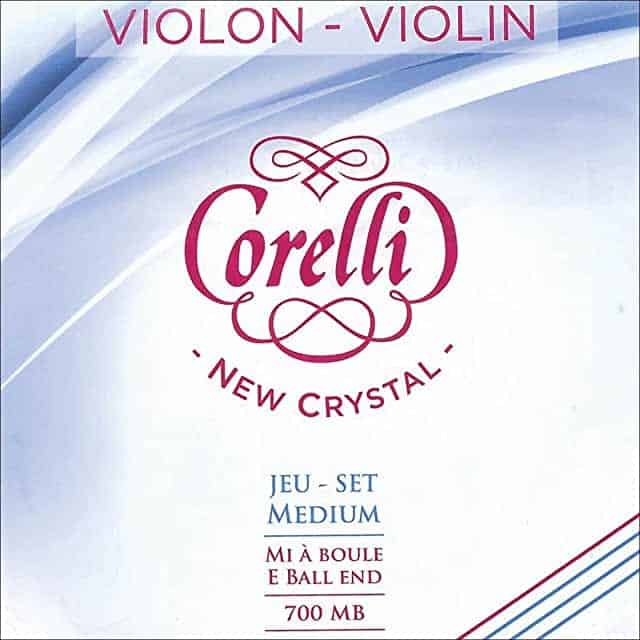
Strings for students and advanced players
Good students and advanced players still want great value for money. But the sound is maybe one of the most important factors. The factors are the following:
- great sound,
- excellent tuning stability,
- great value for money,
- durable strings,
- short break-in time
That is why nylon core strings and then synthetic core strings have been the way to go for a long time now. They offer most of the qualities required. When synthetic core strings came to the market, they were a small revolution. They provided a type of sound comparable to traditional gut strings but with good tuning stability, a short break-in time. They were less subject to humidity and temperature variations. They were more durable and, as significantly, slightly cheaper. So they combine most of the qualities of gut strings sound-wise with the qualities of steel strings.
So a good student and a good player should choose synthetic core strings. Thomastik Infeld Dominant is a good classic or Evah Pirazzi for advanced players. Their respective price on Amazon is competitive.
Strings for professional players
Soloists, orchestra players, and professionals have a more rich and complex need in terms of strings.
- particular types of tones,
- historically aware interpretations,
- price matters less,
- a string for a sound,
- versatility,
- endurance
- Tone over anything else
Some professionals want a particular tone. Gut strings are important for baroque music and baroque set-up instruments.
Historically aware performers can prefer winded gut strings for more versatility than plain traditional sheep gut strings. But when a musician chooses gut strings, it has nothing to do with ease of use and sturdiness. He or she sacrifices everything to sounds and knows it. So, maybe he or she has one of their violins set up that way.
If a musician plays baroque to classical repertoire, winded gut strings can be a good option. If the repertoire stretches to the romantic period, then a steel E and maybe A can add to the instrument capability. Musicians used to play on gut strings during the first part of the 20th century.
Pirastro has great sets of strings in that mindset, for example, the tremendous Oliv set.
- Versatility AND dependability
Besides that, professionals travel a lot, that is to say, experience many differences in temperature and hygrometry. That is why synthetic core strings are still the base here. But with a twist. Traditional makers have added many variations to their sets of synthetic core strings. There is little experiment and change concerning the core itself. But the plating of the metal, the type of winding gives differences in sound and playability.
For example, a good set of strings that give a great sound Eva and see below mix strings (sold individually) - Mix and cherry-pick your strings individually
Good musicians like to cherry-pick their strings. They mix wisely the strings on their best instrument and don’t automatically buy sets. Some soloists like loud and bright E strings to shine. Some violinists that play chamber music might prefer a more subtle and smooth sound. It also depends on the type of instrument. Is your instrument sweet and somehow muffled? It needs a boost. Is it too bright and acid? Then, on the contrary, it can be toned down a bit. It isn’t rocket science, but mostly try and errors.
Mixing strings can give you:
- a better balance between strings volume-wise,
- a better balance tone-wise,
- a good D string without wolf tone,
- a rich A string that leads to:
- a good, brilliant and balanced E string.
As an instrument is not always balanced by itself, different strings can help mitigate its irregularities.
So professional players and soloists have plenty of choice regarding top-of-the-range strings. Usually, they chose synthetic core strings with different platings (Gold, Tin, Aluminum, Silver).
A great example of string sets used to get the most of ou violins are:
- Pirastro Evah Pirazzi (even the Gold variant) is one of the best types of strings all-around, with incredible tone and excellent reliability. They offer still a good value for money on Amazon.
- Pirastro Oliv: the best gut string set. The tone is at its richest and fullest. Yet, the instrument has to be appropriately set up for that kind of string. They didn’t come cheap though, the last time I checked on Amazon.
Don’t forget to bookmark my violin and bow maintenance mega guide for a complete reference!


